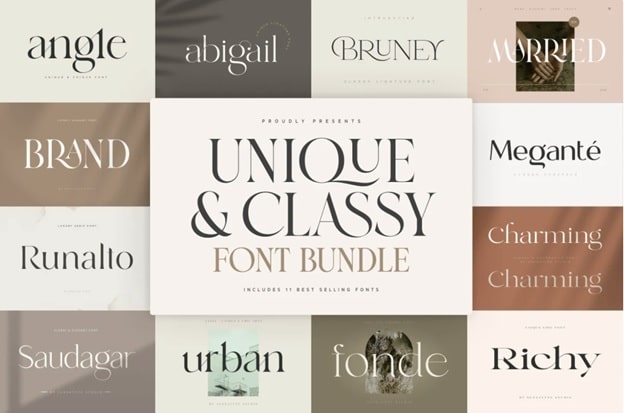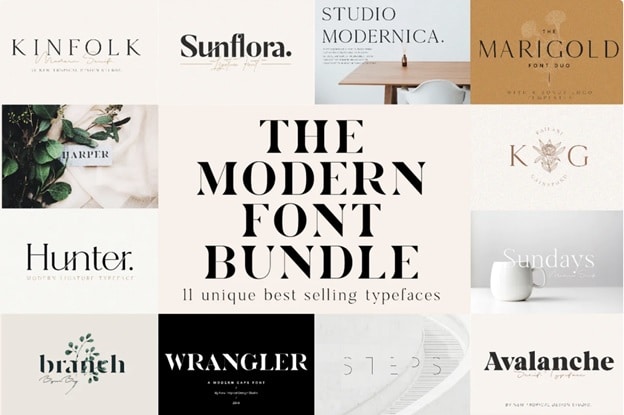Fonts are very important in that they give your designs a certain flavor. The secret to good typography is using the right font. We all know how to use common fonts like Helvetica, Arial, and Courier New, but sometimes you need something different. Let’s explore some of the most popular, yet under-used fonts.

1. Alternate Gothic No2
Contents
Alternate Gothic is an original typeface that was designed for use in signs. It is very useful for headlines and sub-headlines because it has a strong, bold look to it. The font was created by Morris Fuller Benton in 1902. He believed that heads should be “broken into” with the use of an ornament. The letters are crisp and clean, making them perfect for bold designs that need a lot of impact.
Alternate Gothic is used in the design piece below. The design screams “no fear” with the large text placed at the bottom of the image. It’s also nice to see that Alternate Gothic No2 was chosen over the original Alternate Gothic.
2. Blanch
Blanch is a font that was created by Rod McDonald in 2001. The purpose of this font was to create an alternative interpretation for the commonly used Arial font. Blanch has quickly become one of my favorite fonts because it blows Helvetica out of the water in cleanness and readability. Most people know Helvetica, but not many have seen Blanch. It has been featured in a lot of corporate identities and it’s very easy on the eyes when reading long passages of text.
3. Farray Font

Farray is a typeface designed for hyper-fast situations like sign painting and technical drawings. It comes in a variety of different weights, allowing you to choose the one that fits your design best. It’s a very unique fancy font and it’s great for logos because it gives them a “sci-fi,” technological feel.
4. Cooper Hewitt
Cooper Hewitt is an original typeface that was created by Matthew Carter in 2000. The font style has been used for all of the National Park Service signs since 2001 and has been featured in other places such as the Museum of Modern Art and The Wall Street Journal. This font is very easy to read at many different sizes and has a unique, modern look to it.
5. Eurostile
Eurostile was created by Aldo Novarese in 1962. Like Blanch, Eurostile takes an alternative approach to Helvetica by adding more lines into the letters (this is referred to as “double line action”). It’s commonly used for corporate identities such as logos, advertisements, business cards etc. because the font has an original design that helps companies stand out from their competition.
6. Lumiere

Lumiere is an original typeface designed with movie titles in mind but has been used for other purposes as well. This font was created by Christian Schwartz for House Industries and released in 1999. The letters are clean and simple, which makes this font perfect for logos, headlines, invitations, etc. This is one of my personal favorite fonts because of its usage in modern design pieces like the example below where all uppercase text is used throughout the entire design set against white.
7. Neo Sans
Neo Sans was created by Sebastian Lester and released by T26 in 2008. It’s a clean, modern font that has many uses such as presentations, advertisements, invitations, etc. The font aesthetic is very easy to read at the size it would normally be used at and it looks good on screen or in print.
There also isn’t much of a learning curve because most people know how Helvetica looks and this is basically just an alternative version of it with slight differences between some of the letters.
8. Simplifica
Simplifica is another typeface inspired by Helvetica that was originally designed for the modernization of other free fonts (increasing their legibility) for both body-text and display settings. It was created by Tobias Frere-Jones in 2004 and has been featured in a variety of different applications ever since, including the 2010 Winter Olympics. Simplifica’s simplicity makes it perfect for logos, headlines, etc. because the letters are very easy to read in many sizes.
9. Stymie
Stymie is an original typeface designed with captions and small text in mind (the name “Stymie” comes from “caption” spelled backward). This font was created by Morris Fuller Benton in 1917.
The purpose of this font was mostly to increase the legibility of smaller print settings like signs on trolley cars, ads, etc., similar to what Helvetica had done decades later. Stymie is an attractive font and it’s great for logos and headlines in which the letters will be used alone because it is very easy to read at small sizes.
10. Trajan Pro
Trajan Pro was commissioned by Sony Pictures to replace the original logo typeface (which featured a drawing of an actor in a toga-wearing a laurel crown) with something more modern. The word “Sony” was also originally written in Futura but has since been changed to match the rest of the design set against a trophy cup motif background taken from a photograph of the actual statue that stands outside of their headquarters.
This font is basically just an alternative version of Trajan, a well-known font originally created for lettering on movie posters created by Carol Twombly in 1989. It’s popular with designers because it does not have the “traditional” computer lettering look, which is often associated with amateur designs.
Wrapping Up

All in all, there are a lot of great fonts in Creative Market that you probably hadn’t even heard of until now. Even if some of them may look very similar to others they’re still worth giving a shot when it comes time to design your next project.
Leave a Reply